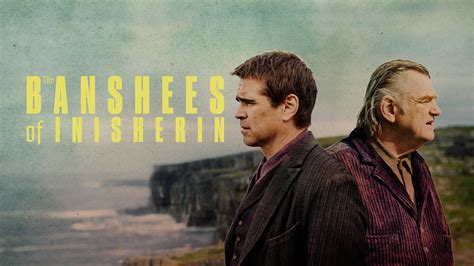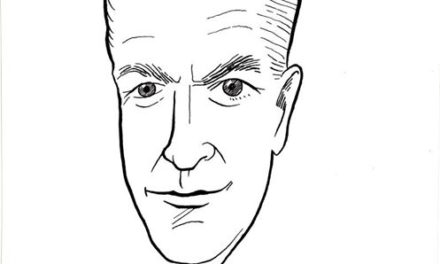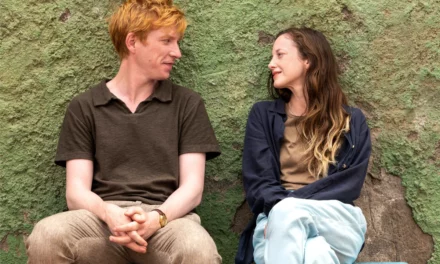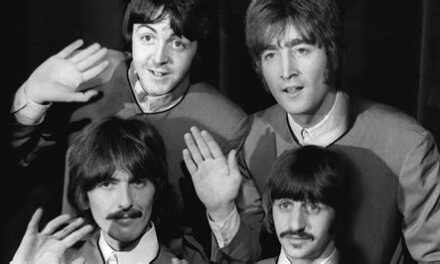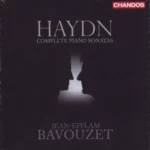One may have to go back to Darby O’Gill and the Little People (1959) to find a happy movie about Ireland. It’s odd that a place of such arresting natural beauty and generally friendly people should foster stories of such unalloyed bleakness. The Informer (1935), Odd Man Out (1947), Shake Hands With the Devil (1959), The Night Fighters (1960), Ryan’s Daughter (1970), and Michael Collins (1996) offer ample testimony.
Ireland’s unhappy past contributes mightily to its literature, politics, and identity. Derby-topped, whisky-drinking, pipe-smoking Barry Fitzgerald may offer a ready and comic image of the Emerald Isle’s inhabitants, but the torn family in the opening pages of Joyce’s Portrait of the Artist as a Young Man, the assassins of Lord Mountbatten, and the hunger-strike of Bobby Sands temper the impression considerably.
The Banshees of Inisherin, a recent BAFTA best-picture and nominee for the Academy Award weaves a somber and tragic tapestry, symbolic and mythical, mixed with a gritty realism. The setting is the fictional island of Inisherin off the west coast of Ireland during the Irish Civil War of the early twenties. Curiously, the war doesn’t seem to affect the inhabitants in the least except for the occasional roar of cannon from the mainland.
Yet war is brewing in the community. Pádraic Súilleabháin (Colin Farrell) is a “dull” but “nice” farmer on the island who loves his miniature donkey “Jenny” and sells his produce in the nearby town. He, also, enjoys his beer and daily accompanies Colm Doherty (Brendan Gleeson), his best friend, to the nearby pub to drink a pint at two o’clock sharp. But when he stops by Colm’s house for the customary ritual, Colm won’t answer the door although, as Pádraic can plainly see, he’s inside.
The pub regulars are mystified, especially when Colm appears and ignores Pádraic. Pressed by his friend for an answer, Colm tersely explains, “Because I don’t like you no more.” And although Pádraic later concludes the whole thing must have been an April Fool’s joke (it was, indeed, April 1st), Colm will not budge. As the days pass and the stand-off becomes charged with deeper confusion, Colm issues an ultimatum. If Pádraic doesn’t stop talking to him, he will cut off one of his fingers for each attempt. And Colm is the local fiddle-player who aspires (provided Pádraic will leave him alone) to write at least one tune for which he will be remembered after death.
It’s easy enough to detect an allegory of the civil war here, with or without the periodic gun blasts from across the water. The people of Inisherin are as generally perplexed by the fighting as they are by the quarrel between Colm and Pádraic. Kearney (Gary Lydon), the local policeman, a thuggish lump of a man who, when the whim takes him, beats his son Dominic (Barry Keoghan) mercilessly, announces to Colm that he’s going to the mainland the next day to help with an execution. A bunch of the Free Staters, he says, are hanging two from Sinn Fein. “Or is it the other way around?” he muses. It was so much easier, he adds, when they were killing the English.
The movie here and there that there’s something just wrong with being Irish. After Siobháin (Kerry Condon), Pádraic’s sister, sickens of and flees Inisherin, she writes from the mainland that the war is nearly over and, anyhow, the people there are less bitter. “I’m not sure why,” she says, “but I think it’s cause a lot of them are from Spain.” The observation carries its weight of both humor and judgment.
But is Ireland the real problem? True, whether on Inisherin or the mainland, people discover the urge to hate and visit death on neighbors, friends, and countrymen. But Ireland isn’t the only place such horrors occur; it’s a symbol of hatred universally, and that fact lifts the film above obvious political/historical allegory.
What are the islanders to do? Surrender to a cruel fate? Through the repeated use of images, the film suggests that answer. Banshees, crying specters that “portend death,” are thematic in the title of the film, the eponymous melody Colm composes (note: Gleeson himself composed the tune, which he, also, plays), and in the dark-clad Mrs. McCormick (Sheila Flitton). She may be a new species of banshee that, as Colm says, “sits back and muses and observes.” Whatever she may be, she seems to be an eerie presence as the plot darkens.
Yet she is not the only recurring image. Pictures of Christ (in the church, on the wall of Pádraic and Siobháin’s cottage), the effigy of the Virgin at fork of a road, and crosses in cottage and church should remind the islanders of what alone can enrich their lives and restore hope. Colm’s desire to write something memorable and Pádraic’s wish to be “nice” are not enough. But they refuse to disentangle themselves from the web they’ve created to become the newer, better men they clearly might be.
The crisis reaches its climax when Colm throws his remaining fingers at Pádraic’s door, fingers that Jenny, the innocent donkey, eats and chokes on. (After the films Au Hazard Balthazar, EO, and this, I’ve had enough of dying donkeys.) Colm in his remorse declares the “war” over, but Pádraic will have none of it, announcing, “Tomorrow, God’s Day,” he’ll set fire to Colm’s cottage; after mass, that’s just what he does. And there will be no peace. As Mrs. McCormick watches from afar, he states flatly that for him, as with the string of Irish wars, “there’s no movin’ on.” Far from making them “quits,” as Colm wishes, for Pádraic, they’re only beginning.
During Eastertide, Christians liturgically recall Christ’s commandment to his disciples: Love one another. Why men and women insist on destroying themselves instead remains a mystery to many, but we know the rejection of Christ lies at its heart. In The Banshees of Inisherin, there will be no peace until the people listen to the voices that portend not death, but life, voices that are all around them.

